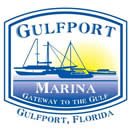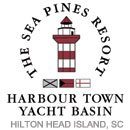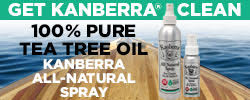Harbour Town Yacht Basin Recognized At Top Marinas, SC AICW MM 565
Harbour Town Yacht Basin Recognized Among Top U.S. Marinas for Sixth Consecutive Year
HILTON HEAD ISLAND, S.C. (Dec. 11, 2025) – Harbour Town Yacht Basin, the full-service, year-round marina at The Sea Pines Resort on Hilton Head Island, has once again earned national acclaim as a 2025 “Elite Fleet Winner. ” It is the sixth consecutive year Harbour Town Yacht Basin has been recognized with the prestigious award that celebrates it as one of the top marinas in the country.
The Boaters’ Choice Awards, hosted by Marinas.com and Dockwa, annually honor marinas with the “Elite Fleet” designation for going above and beyond to deliver exceptional experiences, making them trusted and desired destinations. With 100 slips set against the backdrop of the iconic red-and-white striped Harbour Town Lighthouse, the world-class facility has now attained “Elite Fleet” status every year since 2020, underscoring its unwavering reputation for first-class service.
“This recognition is especially meaningful because it’s based entirely on customer reviews,” said Rob Bender, director of commercial, marine & leisure operations at The Sea Pines Resort. “Being ranked among the top two percent of marinas nationwide is phenomenal. Our team’s dedication to hospitality and service truly sets us apart, and this award is a well-deserved reflection of their hard work.”
Harbour Town Yacht Basin boasts 175 reviews on Dockwa, nearly all with perfect five-star ratings. Since November 2024, the facility has received more than 40 consecutive five-star reviews, Bender noted.
Marina visitors can dock for a day, a week, a month, or longer, enjoying not only its many amenities but also convenient access to The Sea Pines Resort’s extensive lineup of offerings and accommodations.
For more information about The Sea Pines Resort and Harbour Town Yacht Basin, visit www.seapines.com.
# # #
About The Sea Pines Resort
Situated on the southernmost tip of Hilton Head Island, the legendary Lowcountry destination features five miles of unspoiled beaches, 20 clay tennis courts, 14 miles of bike and walking trails, horseback riding, Eco-Adventures, water sports, and the 605-acre Sea Pines Forest Preserve filled with wildflowers, wetlands, and more than 130 species of birds. As the first eco-planned destination in the U.S., The Sea Pines Resort has become the blueprint for numerous beach developments around the country. Guests can choose from an array of accommodations, including 300 villas, 100 rental homes, and the luxurious 60-room Inn & Club at Harbour Town, a Forbes Four-Star boutique hotel and Preferred Hotel Group member. The resort’s best-in-class collection of golf courses, amenities, meeting facilities, and accommodations makes Sea Pines one of the most sought-after leisure and group destinations in America.
Media Contact:
Karen Moraghan
Hunter Public Relations
kmoraghan@hunter-pr.com
908/963-6013


























































Be the first to comment!